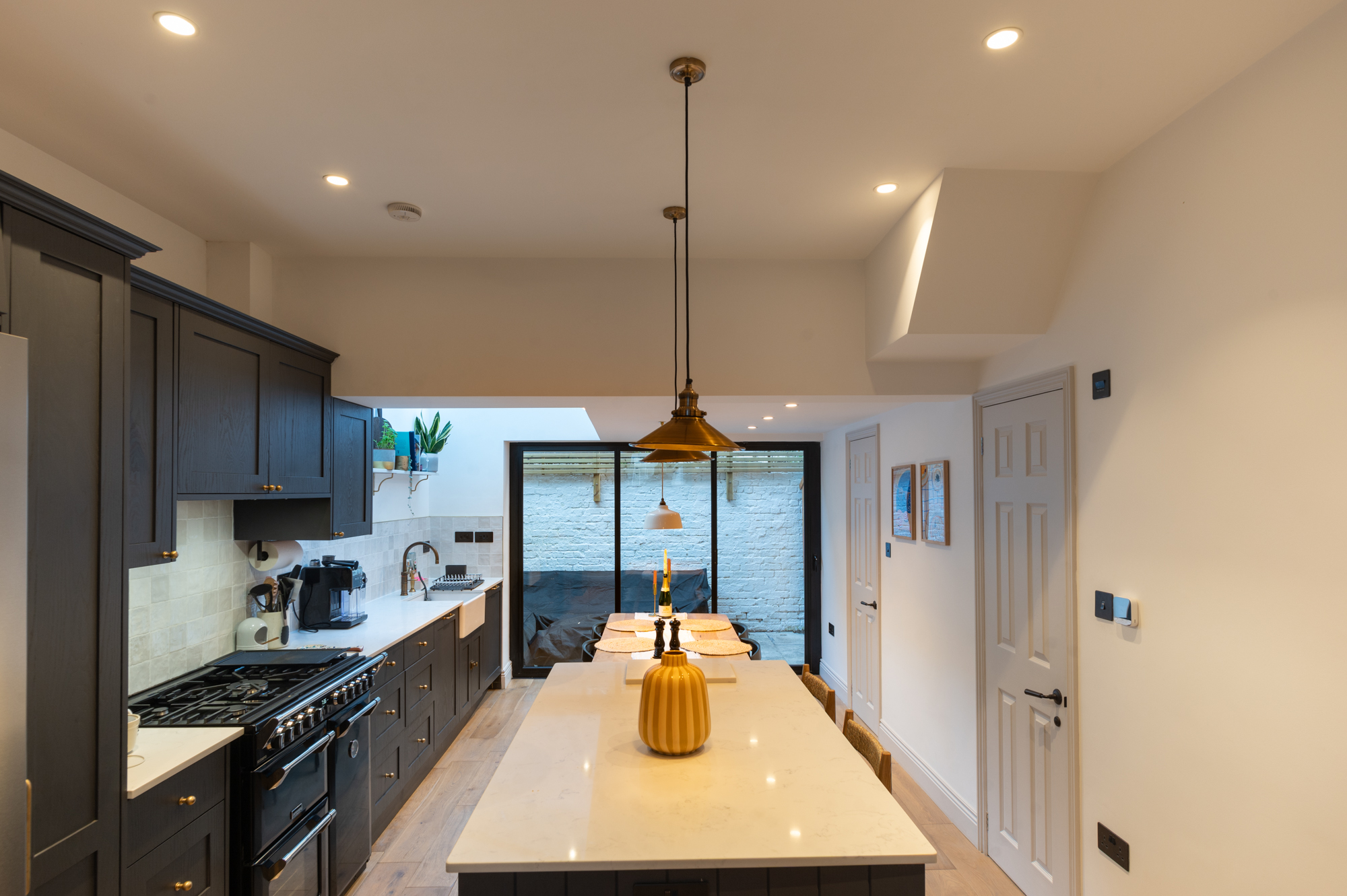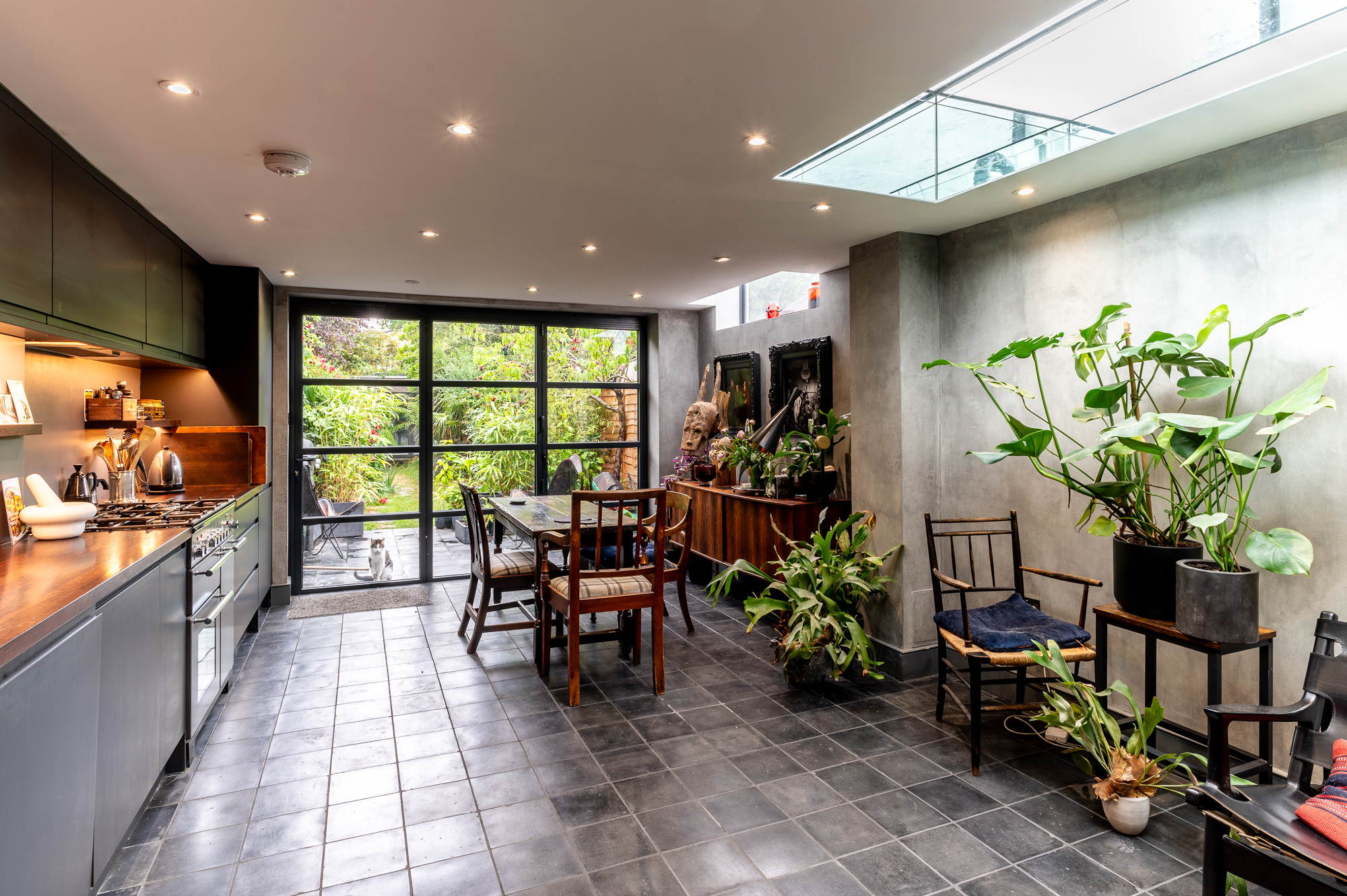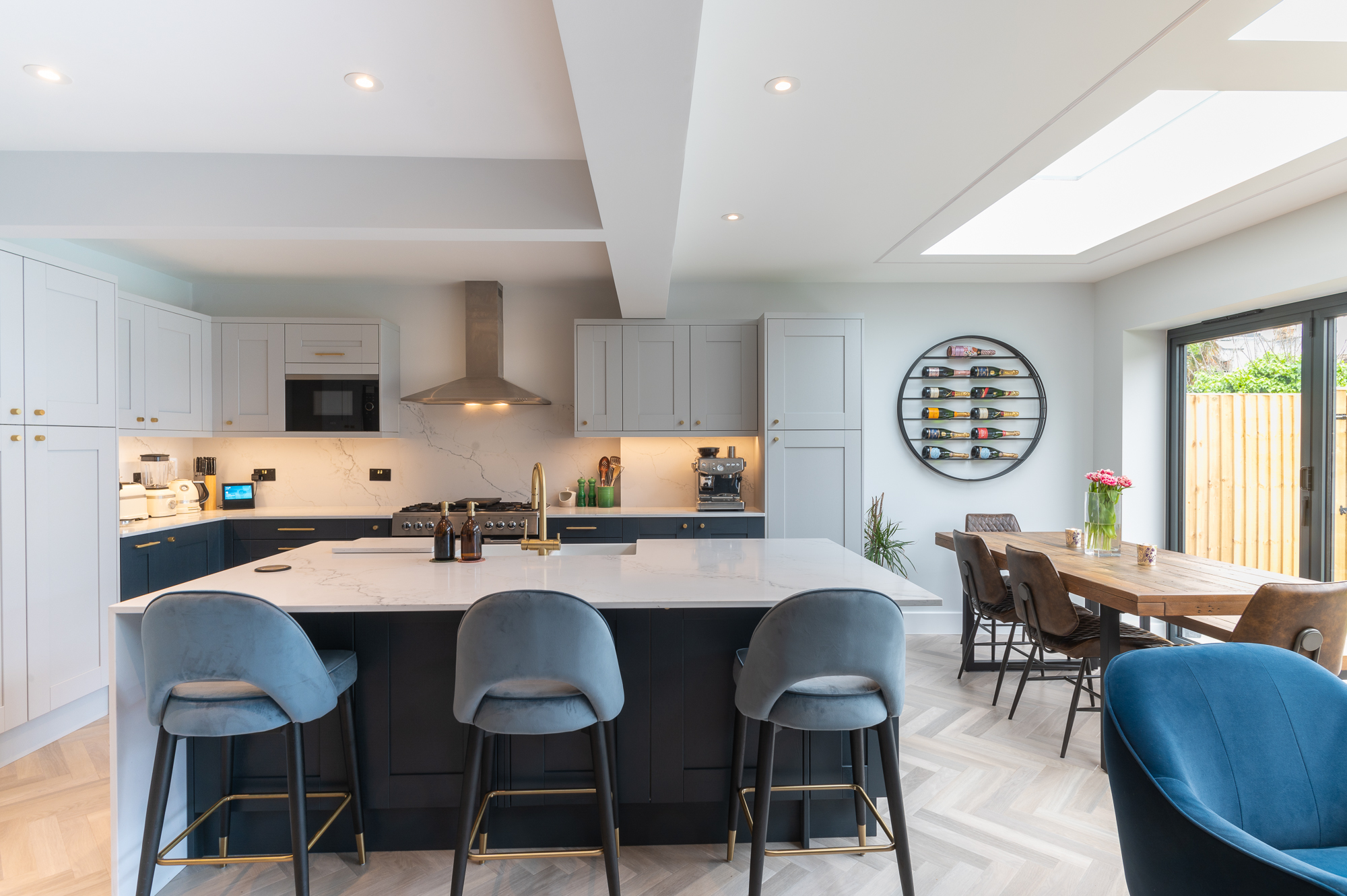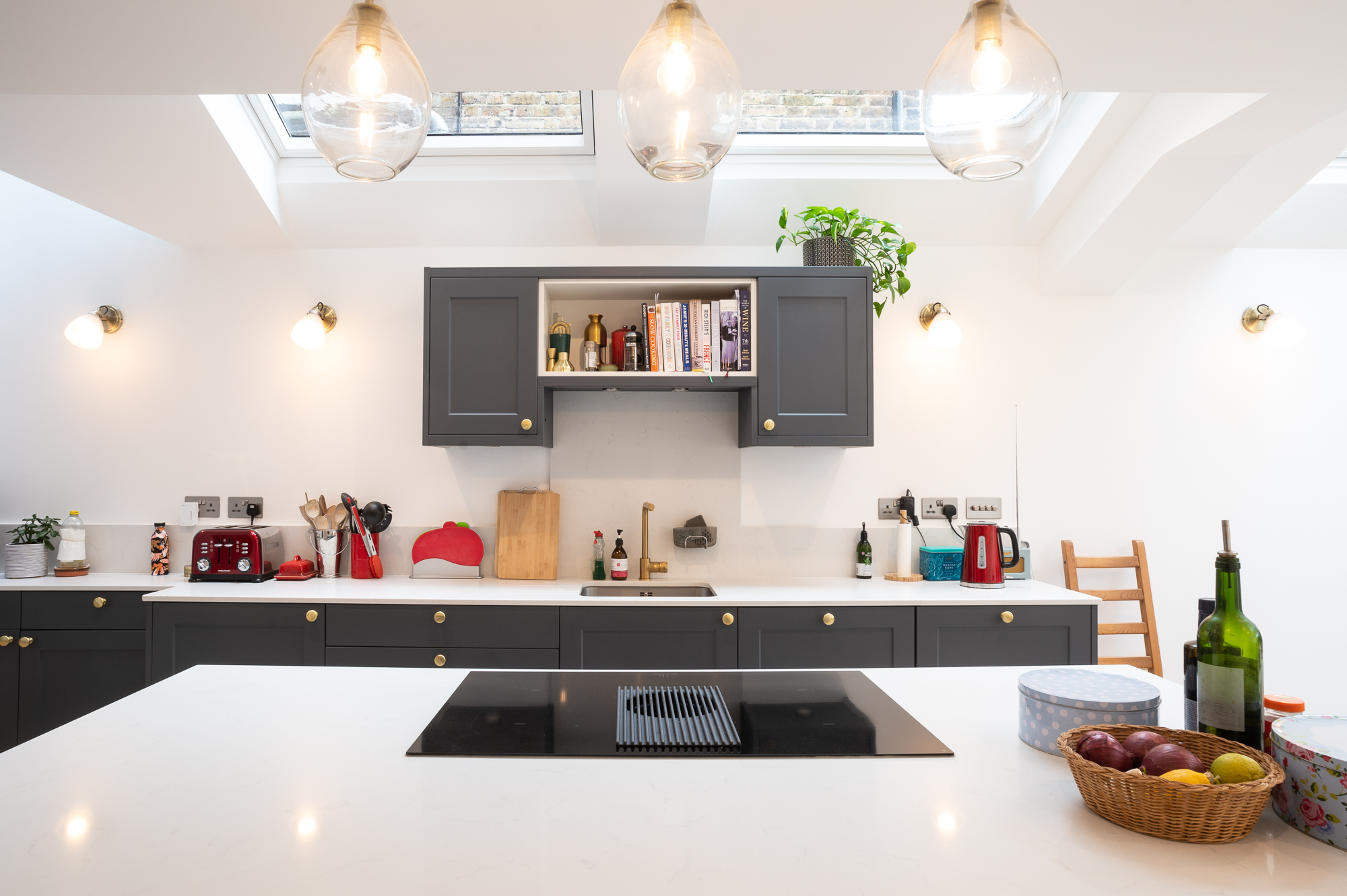Preferred by families for its green spaces, leafy lanes, friendly community, and reputable schools, Tulse Hill offers a sense of ease amidst the busy city surroundings. Cultural and entertainment hubs like Brixton are within easy reach. Loft Conversion Tulse Hill can transform family homes with extra bedrooms or bathrooms. It saves you the trouble and expense of moving. We create innovative layouts that offer better functionality and aesthetics. And as specialist Victorian and 1930s home remodellers, we seamlessly integrate contemporary specifications into your period home.
A loft conversion involves transforming the attic space of a home into a functional and livable area. Executed without sacrificing valuable garden space, it doesn’t involve expanding the property’s footprint. There are different types of loft conversions, some more suitable for certain properties and others suitable for all property types. When carried out to high standards, they can improve the resale value of a property. They are a more economical solution to a growing family’s needs or changing lifestyles. You can add a bedroom, an en suite, a bathroom, a home office, a podcast space, a library, a gaming room, or a yoga studio. Converting your loft also ensures it is well-insulated for better energy efficiency. Redundant loft spaces often lack insulation, leading to high energy bills due to heat waste through the roof.
Velux Loft Conversion – only suitable for lofts with adequate head height, it adds roof windows to your existing attic space to make it habitable. It doesn’t usually require planning permission, but hiring a loft conversion specialist will ensure the work complies with local building regulations and is feasible for your specific property.
Dormer Loft Conversion – one of the most common loft conversion types, it extends the roof vertically from the existing roof slope to create a box-shaped structure. Typically located at the rear of the property, dormers offer a functional floor area and headroom. It has dormer windows to bring in natural light and enhance the overall appearance.
Hip-to-Gable Loft Conversion – ideal for 1930s hipped roof semi-detached and terraced properties, it involves replacing the hip of the roof with a gable wall to create more head height and usable floor space in the loft.
Mansard Loft Conversion – French Baroque by origin, Mansard extends a whole roof plan to create a large open-plan living area or multiple rooms, replacing the sloping face of the roof with a near-vertical wall at the rear of the property. A double mansard seamlessly integrates with the rest of the architecture to appear like a separate floor.
L-shaped Conversion – two dormers join to form an L-shape. The larger dormer is usually placed perpendicular to the roofline, while the smaller dormer is built at an angle, creating the L-shape configuration. The design complements Victorian terraced or semi-detached houses that have rear outriggers.
The loft conversion cost is influenced by the type of conversion you choose, the size of the floor area created, complexities of structural changes, and design features. Options for conversion styles depend on the type of property, available loft space, and your requirements.
Room in the roof conversion (basic) – £35,000
Dormer loft extension – £50,000
Mansard extension – £60,000 – £65,000
Hip-to-gable extension – £65,000
L-shaped extension – £65,000 – £75,000
A well-executed loft conversion in Tulse Hill can significantly impact your property’s value. Unlawful additions, structural issues, and poorly designed conversions can lower the value. By engaging a skilled loft conversion specialist, you can add extra living space while enhancing the aesthetics of your home. It is an opportunity to integrate modern specifications into your Victorian or period home’s layout.
Opting for bespoke designs conceived by skilled architects and employing proficient building techniques elevate the quality of your addition. Loft conversion specialists have in-depth knowledge of current planning guidelines and building regulations. They can draw up plans to exact requirements. Hiring a professional team that undertakes all logistics and planning details will keep things stress-free for you.
We specialise in Victorian and 1930s home remodelling in London and surrounding areas with decades of experience in space generation. Our work centres on bespoke designs drawn by professional architects to align with your unique requirements, home, and lifestyle. Sunlit rooms, free-flowing spaces, and contemporary specs define our spaces.
Our 3D designs provide a more realistic imagining of spaces before they come to life. With two separate contracts, each for the design and build stages, you are never tied up in lengthy contracts. Both stages are equally important to us, and we spend time and effort to perfect both.
Our loft conversions strictly adhere to building regulations, guaranteeing compliance and safety. To maintain exceptional quality and timely completion, we assign a dedicated project manager to oversee every aspect of the construction. With our commitment to quality; we aim to transform your loft into a beautifully designed and functional space that will stand the test of time.
The cost of your loft conversion will depend on the type of conversion you choose and the total square footage it covers. The shape of the roof, materials used, and structural changes will influence the overall cost. Contact our team for a free, no-obligation itemised quote today!
Our end-to-end loft conversion service covers everything you need for a seamless transformation. From initial planning and bespoke designs to handling planning permission submissions, building control applications, method statements, Party Wall Agreements, and Thames Water build-over Agreements, we fulfil all requirements to deliver our finished product with zero hassles.
Loft conversions generally fall within permitted development rights, allowing you to build without planning permission. However, certain types of loft conversion may exceed the specified limitations. Living in a conservation area or a listed building can also impact your permitted development rights. Our dedicated planning specialists will assist you in navigating the regulations and, if necessary, apply for planning permission on your behalf.
How we deliver projects
Our process is simple and divided into two distinct phases with separate contracts: Design and Build. As a client you only commit to one phase at a time depending on what stage of the process you are in. Each phase consists of three stages as described below.
1. Design
This is the kick-off point for your project. We carry out a complete architectural measured survey of the property. This allows us to create accurate CAD design drawings. This is followed by a design meeting to start discussing your ideas in more detail.
2. Planning
At this stage we finalise the designs with you and start preparing planning applications as needed. We place a high priority on ensuring that plans, designs and schedules are all based on a thorough and detailed understanding of planning guidelines. We co-ordinate with local authorities until the decision is made, and the planning approval is secured.
3. Technical
Once the planning consent is secured, we translate the design drawings into more detailed technical drawings for the purposes of building control and construction. This also includes specifications and structural calculations. At this stage, we will also submit to you our ‘no obligation’ quote for the build phase.
4. Pre-build
90% of our clients decide to stick with us after the design phase is completed. Once the build contract is signed, we kick off the process by making sure all the pre-build processes are complete. These include assistance with party wall agreements, Thames Water build over agreement, submitting building control application, and preparing method statements etc as needed. This stage ends with a pre-start meeting with your foreman before the actual build begins.
5. Build
One of our foremen will be dedicated to your project and will be on-site to manage everyday works. Our project managers will be overseeing the works to make sure they are completed to high standards, within your budget and on time. Throughout the process we will keep you updated with the progress and coordinate the works with third parties such as kitchen or flooring suppliers. We will also advise and guide you to choose any suppliers if needed.
6. Handover
As the build draws to finish, we will help to iron out any ‘snags’ to make sure everything is completed to your satisfaction. We will put together all necessary certificates such as gas, electricity and building control completion along with warranties for glazing, boiler etc. At the final completion meeting, we will hand you these documents, together with the keys to your house. Needless to say, you can contact us any time after this, if you want us to look at something.
This is the kick-off point for your project. We carry out a complete architectural measured survey of the property. This allows us to create accurate CAD design drawings. This is followed by a design meeting to start discussing your ideas in more detail.
At this stage we finalise the designs with you and start preparing planning applications as needed. We place a high priority on ensuring that plans, designs and schedules are all based on a thorough and detailed understanding of planning guidelines. We co-ordinate with local authorities until the decision is made, and the planning approval is secured.
Once the planning consent is secured, we translate the design drawings into more detailed technical drawings for the purposes of building control and construction. This also includes specifications and structural calculations. At this stage, we will also submit to you our ‘no obligation’ quote for the build phase.
90% of our clients decide to stick with us after the design phase is completed. Once the build contract is signed, we kick off the process by making sure all the pre-build processes are complete. These include assistance with party wall agreements, Thames Water build over agreement, submitting building control application, and preparing method statements etc as needed. This stage ends with a pre-start meeting with your foreman before the actual build begins.
One of our foremen will be dedicated to your project and will be on-site to manage everyday works. Our project managers will be overseeing the works to make sure they are completed to high standards, within your budget and on time. Throughout the process we will keep you updated with the progress and coordinate the works with third parties such as kitchen or flooring suppliers. We will also advise and guide you to choose any suppliers if needed.
As the build draws to finish, we will help to iron out any ‘snags’ to make sure everything is completed to your satisfaction. We will put together all necessary certificates such as gas, electricity and building control completion along with warranties for glazing, boiler etc. At the final completion meeting, we will hand you these documents, together with the keys to your house. Needless to say, you can contact us any time after this, if you want us to look at something.
What Our Clients Say
Featured Projects

Fulham
Orbain Road SW6 7JZ
This project was completed in 2023 and the approximate budget was £101,000.
Learn more

Lambeth
Hetherington Road SW4
We completed this stunning project for our client Angus in Lambeth.
Learn more

Teddington
Station Road SW4 7PA
We completed this exciting project for our clients on Station Road, a quaint residential area in the heart of Teddington.
Learn more

Leyton
Windsor Road E10
We completed this kitchen extension on Windsor Road, a charming residential street nestled in the heart of Leyton.
Learn more

Clapham
Hydethorpe Road SW12 0JF
We did this kitchen extension project for our clients in Hydethorpe Road SW12.
Learn more

Fulham
Orbain Road SW6 7JZ
This project was completed in 2023 and the approximate budget was £101,000.
Learn more

Lambeth
Hetherington Road SW4
We completed this stunning project for our client Angus in Lambeth.
Learn more

Teddington
Station Road SW4 7PA
We completed this exciting project for our clients on Station Road, a quaint residential area in the heart of Teddington.
Learn more

Leyton
Windsor Road E10
We completed this kitchen extension on Windsor Road, a charming residential street nestled in the heart of Leyton.
Learn more

Clapham
Hydethorpe Road SW12 0JF
We did this kitchen extension project for our clients in Hydethorpe Road SW12.
Learn more
Build a Quote!
Let's get started with building your own bespoke quote for your dream extension. Tell us as much in detail as possible to get most accurate price.
Get StartedBuild a Quote!
Let's get started with building your own bespoke quote for your dream extension. Tell us as much in detail as possible to get most accurate price.
Get Started








